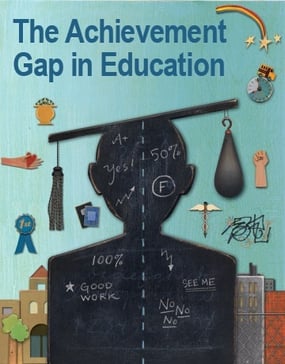By: Margo Ensz on June 16th, 2015
Grade Level: Primary (PK-2) | Grade Level: Intermediate (3-6) | Featured Topics: Industry News and Trends | Featured Topics: Differentiated Instruction | Featured Topics: Education Policy | Featured Topics: Professional Development
The National Association for Elementary School Principals (NAESP)'s annual conference kicks off in two weeks in Long Beach, CA (June 30-July 2). Each year the conference, designed for educators on the "front lines," challenges leaders to think, what's next? Attendees can choose their conference focus from several tracks:
Let's talk about the first track, Student Achievement Gaps. Achievement gaps can be discussed in multiple ways and often have varying definitions. The National Association for Educational Progress (NAEP) explains, "Achievement gaps occur when one group of students outperforms another group and the difference in average scores for the two groups is statistically significant (that is, larger than the margin of error)." The National Education Association (NEA) also provides a brief list of groups that experience achievement gaps and indicators of those gaps:

While the NAEP gathers data and reports on significant instances of the gap narrowing, it offers no explanation or reasoning behind the change in gaps. That's where principals, teachers, curriculum coordinaters, and other leaders come in. The discussions at NAESP on this track such as "Extraordinary Principals: Leading Equitiable, High Achieving Schools" will hopefully provide data and recommendations to promote achievement for all students. New data from the US Department of Education's National Center for Education Statistics shows that graduation rates for black and Hispanic students increased by nearly 4 percentage points from 2011 to 2013, outpacing the growth for all students in the nation, which many view as an indicator of future gains.
After attending key sessions and speakers, we encourage you to visit the Exhibit Hall and stop by Booth #1418 to learn how VariQuest Visual Learning Tools, in accordance with IDEA, offer the differentiated instructional support to raise educational success for all students and close the achievement gap.
Not going to the conference or want to read about a school making great strides to close the achievement gap? Read a general case study of the school here and an achievement-gap specific post here!
Image source: http://goo.gl/l1HEaB